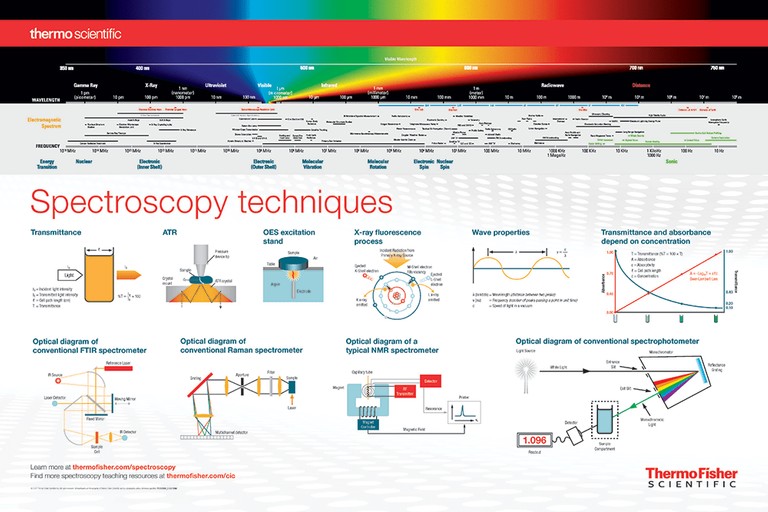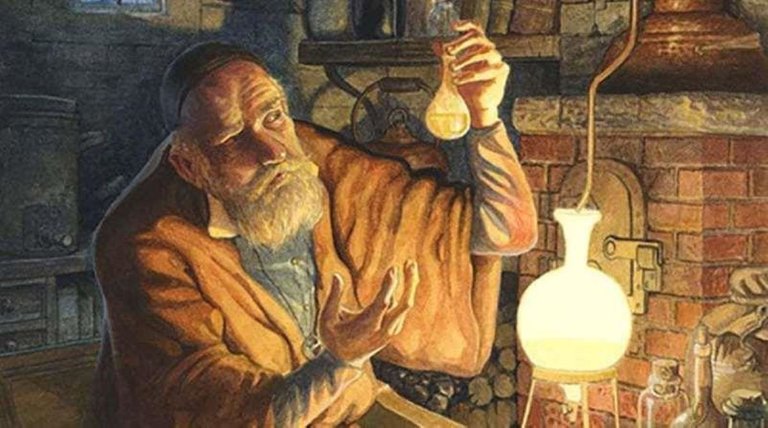
Source
The technique used to know the chemical composition of a substance is called spectroscopy and is defined as the science that it dedicates to the study of the interaction between electromagnetic radiation and matter, with absorption or emission of radiant energy and has applications, among other disciplines , in astronomy, physics, chemistry and biology.
La técnica utilizada para saber la composición química de una sustancia se llama espectroscopia y se define como la ciencia que ese dedica al estudio de la interacción entre la radiación electromagnética y la materia, con absorción o emisión de energía radiante y tiene aplicaciones, entre otras disciplinas, en astronomía, física, química y biología.
This means that each element that makes up the periodic table reacts differently to the light it receives, absorbing or emitting different wavelengths depending on its nature, forming a specific pattern that identifies that substance, differentiating it from others by means of different methods.
Esto quiere decir que cada elemento de los que componen la tabla periódica reacciona de manera diferente a la luz que recibe, absorbiendo o emitiendo distintas longitudes de onda dependiendo de su naturaleza formando un patrón específico que identifica a esa sustancia diferenciándola de las demás por medio de distintos métodos.

Source
But how have we come to these conclusions? Is it about extraterrestrial technology that has been revealed to the chosen ones? Well, no, it is all much more prosaic. Already in the Middle Ages alchemists in their search for the philosopher's stone liked to throw different substances into the fire and they observed that the flame changed color depending on the composition of the substances.
Pero ¿cómo hemos llegado a estas conclusiones?, ¿se trata de tecnología extraterrestre que ha sido revelada a los elegidos?, pues no, es todo bastante más prosaico. Ya en la edad media a los alquimista en su búsqueda de la piedra filosofal les gustaba arrojar al fuego distintas sustancias y observaban que la llama cambiaba de color dependiendo de la composición teles sustancias.
Thus they realized that the salts rich in sodium gave off an orange light while the salts of copper, boron or barium colored the flame green and the substances rich in lithium or strontium gave the flames a beautiful red color, this did not It was more than an anecdotal curiosity until Sir Isaac Newton came up with making light pass through a glass prism.
Así se dieron cuenta de que las sales ricas en sodio desprendían una luz anaranjada mientras que las sales de cobre, boro o bario coloreaban la llama de color verde y las sustancias ricas en litio o estroncio daban a las llamas un bonito color rojo, esto no fue más que una curiosidad anecdótica hasta que a Sir Isaac Newton se le ocurrió hacer pasar la luz a través de un prisma de cristal.

Source
Several centuries later another scientist named Henry Talbot used this prism to analyze the light emitted by the salts of strontium and lithium that initially gave a very similar light and he realized that it was not the same red but had a spectrum of light well differentiated that characterized each of these elements.
Varios siglos más tarde otro científico llamado Henry Talbot utilizó este prisma para analizar la luz emitida por las sales de estroncio y litio que en principio daban una luz muy similar y se dio cuenta de que no ere el mismo rojo sino que tenían un espectro de luz bien diferenciado que caracterizaba a cada uno de estos elementos.
Over time, scientists realized that this technique could not only be applied to chemical substances but could also be applied to huge balls of incandescent gases, that is, to stars, and they applied this technique to be able to know the chemical composition of stars and other types of light-emitting cosmic objects.
Con el tiempo los científicos fueron se dieron cuenta de que esta técnica no solo se podía aplicar a sustancias químicas sino que también podría aplicarse a bolas inmensas de gases incandescentes, es decir, a las estrellas y aplicaron esta técnica para poder conocer la composición química de las estrellas y otros tipos de astros emisores de luz.
Hola @mauromar, es genial saber esto…
Imagino que algunos utilizaron estos conocimientos para decir que eran magos poderosos.
Hola @mauromar, es genial saber esto…
Imagino que algunos utilizaron estos conocimientos para decir que eran magos poderosos.
Congratulations @mauromar! You have completed the following achievement on the Hive blockchain and have been rewarded with new badge(s) :
You can view your badges on your board and compare yourself to others in the Ranking
If you no longer want to receive notifications, reply to this comment with the word
STOPTo support your work, I also upvoted your post!
Support the HiveBuzz project. Vote for our proposal!